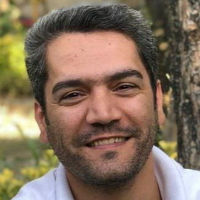Developing the integrated system of regional sustainable development of Razavi Khorasan
Regional and local levels of managing and implementing development policies have always been the focus of scientific, policy-making, and executive circles. In this regard, new models have emphasized sustainable development. The sustainable development of a region should not only be coordinated with its various resources, but also it should be based on the social environment and native culture of the country and region. Therefore, in the current research, a dynamic model of the economic-cultural development triangle is presented with the inclusion of sustainable development dimensions (social, environmental and economic). The economic-cultural development triangle model is a non-dynamic model with four dimensions of executive bodies, parliament representatives, private sector and Friday Imams. In this model, cooperation and coordination of these four dimensions are considered necessary for regional development. This shows the complexity of an economic system that consists of various factors and many interactions, which leads to complex behaviors of economic indicators over time. In this complex system, the implementing of regional development policies without a systemic approach and holistic view is not beneficial and may lead to a decrease in economic growth and regional production. Therefore, in policy-making, attention should be paid to the influential factors in the system, and the appropriate policy should be selected and implemented. The systems dynamics approach is a holistic thinking method about all components of a system and is a way to understand the dynamic behavior of complex systems. Therefore, this approach has been used in this research.
Due to the complex and interlinked relationships in the sustainable development system of the region, the constituent elements of this system are dynamic and change over time. Therefore, in this research, systems dynamics method is used. In this approach, in the first step, the research problem is defined. According to the research background, the variables of the problem and the boundary of the sustainable economic development system of the region are determined. In the next step, the relationship between the variables is determined by a cause-and-effect diagram. Then a flow diagram is drawn to simulate the problem. After simulating using Vensim software and validating the model, suitable scenarios are evaluated.
The purpose of presenting the model is to improve the economic and social indicators of the province. Based on the designed model, the behavior of the system has been simulated in a ten-year time horizon from 2013 to 2023. The results of the scenario show that private sector’ presence did not have a one-time and jumpy increase effect on the gross domestic product of the region. However, rather it helped the production growth process in a very gentle and delayed manner. The results of the simulation of the policies show that the two policies, "stability of laws and executive procedures" and "optimal use of investments," lead to the increase of private sector’ economic activities. Since these policies highlight private sector’ presence in the region, the implementation of this policy will lead to an increase in jobs created by private sector and investment through private sector’s activities. In contrast, the physical capital created on a large scale in the province is not noticeable. The strength of the economic and cultural development triangle plan is the correct direction of investments and using unused capacities, and as a result, the working population has increased.
According to the results of the implementation of the policies, it is suggested that they should be implemented simultaneously according to the combined policy of "stability of laws and executive procedures", "optimal use of investments," and "development of educational infrastructure," which will also make use of the capacities of the region's workforce. Moreover, it also increases the available physical capital because other investors (other than private sector) tend to invest. With the implementation of the combined policy, the working population and physical capital, which are considered as production inputs, will increase. As a result, the production of the region will increase.
-
Modeling and Analysis of Natural Gas Demand in Different Economic Sectors (An Autoregressive Distributed Lag Approach)
Mohammadtaher Ahmadi Shadmehri*
Quarterly Energy Economics Review, -
Designing a Dynamic Model of Public Bus Transportation to Increase its Share of Urban Travel with a System Dynamics Approach (Case Study: Mashhad City)
*, Somayeh Fadaei, Ali Sibevei
Journal of Transportation Engineering,


